Old School VS. New Skool – By Legendary STC Photographer Byron Newman.
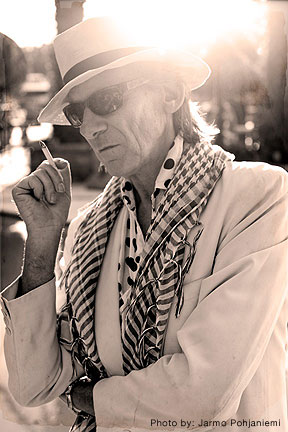 I fell in love with Maple at the tender age of six. She had skin the color of honey, big brown eyes with long lashes, a heaving bosom and breath like frankincense. Fortune smiled upon me as I now had the ways and means of capturing my love on film, forever. I had just been given by my father, my first camera. It was a simple box camera that had the viewfinder on the top so you looked down onto a small screen.The moment I peered down into this frame, discovering I could choose the fragments of the world I liked and discard the rest, I was hooked. Life viewed within this frame seemed like a magical place to me, and I spent many happy days taking my time to make compositions that I found pleasing. Then came the excitement of the film being taken to the chemist for developing, and the sweet anticipation of awaiting the return of the little black and white glossy prints.
I fell in love with Maple at the tender age of six. She had skin the color of honey, big brown eyes with long lashes, a heaving bosom and breath like frankincense. Fortune smiled upon me as I now had the ways and means of capturing my love on film, forever. I had just been given by my father, my first camera. It was a simple box camera that had the viewfinder on the top so you looked down onto a small screen.The moment I peered down into this frame, discovering I could choose the fragments of the world I liked and discard the rest, I was hooked. Life viewed within this frame seemed like a magical place to me, and I spent many happy days taking my time to make compositions that I found pleasing. Then came the excitement of the film being taken to the chemist for developing, and the sweet anticipation of awaiting the return of the little black and white glossy prints.
And so it was, in love with Maple and in love with photography that one day out in the fields of summer, I had Maple beautifully centered in the viewfinder. The background was harmonious and the sunshine gleamed on her golden skin. But there was something I had not noticed. A large wasp had found its way up my short flannel trousers and at the decisive moment when I pressed the shutter, the wasp also took its best shot. A searing pain shot through the areas where later in life I would play. I dropped the camera with a scream causing Maple to bolt. I did not pick up a camera again for well over a decade. My love for Maple and photography were gone in one excruciating moment.
Looking back now I realize that my love for Maple (Cow) was going nowhere as she was not human, but bovine. I still retain affection for the gentle beast of the field, and also rediscovered my love for photography.
My first ever job for Playboy was the shooting of a Centerfold. Talk about being thrown in the deep end. I was shooting in Chicago with equipment I was not familiar with. I was shooting on a 10×8 plate camera that is notoriously difficult to handle…just getting the damn thing in focus and with enough depth of field is a challenge in itself. Then comes the problem of the image being too sharp … what was needed was the characteristic Playboy glow to the skin achieved by the use of fine black net stretched over the lens … I used to make small holes in the net with a piece of smoldering string to ensure that the softening was not too extreme … it was sharp for sure but had an ethereal quality too it.
The sophistication of the lighting certainly required and requires the use of many different light sources to accentuated aspects of the model and the set. Although I have subsequently shot other Centerfolds during my career at Playboy I have to tell you that while I enjoyed the challenge, I was not over enamored with the experience. Being English, I avoid saying European as we are in island race geographically removed from mainland of`Europe and therefore somewhat different in our sensibilities, I found it difficult to get my head around the idea of the all American dream girl and everything shooting such a concept requires. To me it was too much of a formula within quite strict parameters and I found the experience too restrictive on my creativity.
Gary Cole, being the astute photographic director that he is realized that too, and so I became the man who was turned to for themed pictorials where the concept and ideas where allowed more freedom to be developed. This was much more my bag. and Gary put a lot of faith in me and my partner, producer, stylist and wife Brigitte Ariel, to put together pictorials in England and on location around the world, and more often than not without an editor on board to supervise the shootings. I loved this freedom I was afforded. Sometimes I worked with the legendary Marilyn Grabowski who for decades was the impetus and inspiration behind most Playboy shoots. Her talents do not need my confirmation … they have become part of Playboy folklore. Those of you who have seen ‘The Devil wears Prada” will understand when I say that Marilyn was a force of nature and she who must be obeyed. She was my mentor, strict mistress, friend and adversary all rolled into one. If Marilyn was pleased you knew you had excelled.
Please do not get me wrong. I am in no way derogating the massive talents of the Playboy Centerfold photographers. They have a very special talent that only few can aspire to and their technical expertise leaves me standing in awe. I have never been the most technical of photographers … more a maverick, flying by the seat of my pants intuitive kind of photographer, who has limited understanding of equipment and little fascination for it either. Equipment does not produce great pictures…it is the man (or woman) who utilizes the equipment chosen that is the creator. During my career I have dabbled in most areas of picture taking; advertising campaigns, fashion, portraiture, photo-journalism, still life, even sports photography. Each situation required its own solution and I found my way through. A year studying painting, sculpture and art history, another year of graphic design, and then three years on a photography course at London’s premier college gave me a solid grounding in the visual arts and photographic techniques.
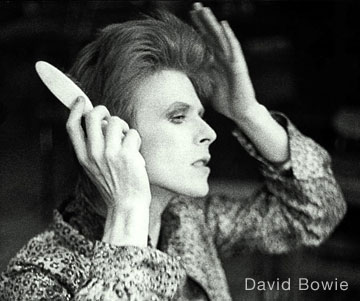 But when it came to photographing women for Playboy and others I decided early on to develop a technique of lighting using equipment that few if any used in quite the same way. I made the choice to use continuous lighting using HMI daylight balanced lights as my main source light and then mixing in and accentuating using halogen follow spots commonly used for stage lighting. I love the different color temperatures, the ability to shape light very accurately and quickly and the fact that this set up became my trademark … an important consideration in this competitive environment. Quirky ideas and concepts, busy propping and styling, ..not just initial impact but images you could linger over as the more you looked the more they revealed. This also became something that has made my photographs recognizable.
But when it came to photographing women for Playboy and others I decided early on to develop a technique of lighting using equipment that few if any used in quite the same way. I made the choice to use continuous lighting using HMI daylight balanced lights as my main source light and then mixing in and accentuating using halogen follow spots commonly used for stage lighting. I love the different color temperatures, the ability to shape light very accurately and quickly and the fact that this set up became my trademark … an important consideration in this competitive environment. Quirky ideas and concepts, busy propping and styling, ..not just initial impact but images you could linger over as the more you looked the more they revealed. This also became something that has made my photographs recognizable.
My lighting technique is not without it’s drawbacks. Slow shutter speed, fairly wide apertures, static poses for models … all problems you do not encounter when using strobe. But hey … ones mans wine is another mans poison. It suits me .. I can light effectively with a small amount of lights … what I see is what I get … I like that. I sometimes add strobes into the mix usually to lift backgrounds a little. HMI”s and follow spotlights are readily available to rent or buy.
About Eighty percent of my career as a photographer has been spent shooting film. Editing was a task I did not look forward to. It was time consuming, monotonous and tiring. I had constructed a large Lightbox on which I would lay out the contents of the box of framed transparencies, 36 to a box, and on an average shoot some 60 boxes. Each transparency had to be viewed in some detail with a magnifying loop, selected or deselected into various piles and then looked at again maybe two more times to select the ultimate image. If I was supplying the client with the results of the entire shoot then the process was a more simple affair with just the pulling out of images that were technically or artistically at fault. It was the finding of the ultimate image that took time … and of course that is somewhat a subjective choice. Sometimes it is interesting to let a third party edit your photos to give another perspective on the results … sometimes one can be too ‘close’ to one’s own creations.
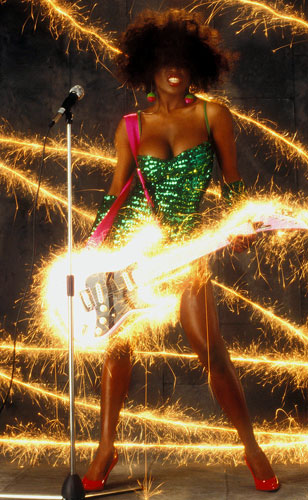 Editing has now become so much less laborious with all the tools available to us on computers. I can now whip through a shoot. First thing is the deletion of mistakes … and there are several as the safety net of shooting digitally has made me less careful. I can then grade my choices, enlarge to check details and point of focus at the touch of a button … it is no longer a chore or even a bore, It is a pleasure to see all the results up in front of me on the screen . I can sit comfortably there rather than stoop over a lightbox scanning along endless row of little plastic mounts. My cupboards to longer bulge with boxes of transparencies … just a few slim line DVDs…easily accessible to view at anytime
Editing has now become so much less laborious with all the tools available to us on computers. I can now whip through a shoot. First thing is the deletion of mistakes … and there are several as the safety net of shooting digitally has made me less careful. I can then grade my choices, enlarge to check details and point of focus at the touch of a button … it is no longer a chore or even a bore, It is a pleasure to see all the results up in front of me on the screen . I can sit comfortably there rather than stoop over a lightbox scanning along endless row of little plastic mounts. My cupboards to longer bulge with boxes of transparencies … just a few slim line DVDs…easily accessible to view at anytime
I had developed over the years a method of shooting that made the whole process of image selection easier. I adopted this method because it seemed efficient and logical. The fact that it made editing faster was purely a bi product, but a welcome one. The method was to shoot about ten frames of the same pose with just very minor changes in nuance of expression, tilt of head, position of hands … subtle differences. When it came to picture selection I could then forget about ‘best’ pose as they were all about the same, and just concentrate on finding that little something that makes a good pose come alive. I would then move the pose on a little and continue the same process.
I like to take advantage of situations as I find them … scouting locations, working on concepts and styling are an enormous part of the pleasure of creating images for me, sometimes even above the mechanics of actually taking the picture itself. It is often the idea that excites me, not the technicalities of achieving it. I also am of the ‘winging it school’ of photography. Most often if I have a very clear idea of what I want to achieve the reality never quite matches up to it. Imagination is too powerful and elusive to be captured by a mere camera. I like to have an open mind, ready to take it where it leads me. This way results can be truly surprising … serendidy steps into the equation and weaves her magic.
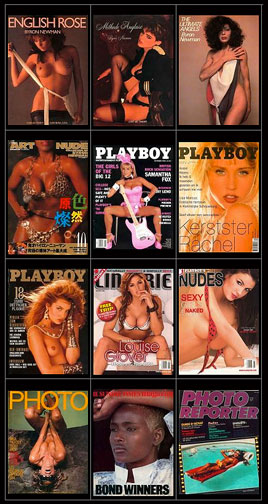 And after all ladies and gentlemen, that is what we are trying to achieve here … a little bit of magic. So pick up your wand, wave it around a little, surprise yourself … and others.
And after all ladies and gentlemen, that is what we are trying to achieve here … a little bit of magic. So pick up your wand, wave it around a little, surprise yourself … and others.
There was something about shooting film that made one consider more carefully what one was shooting. Perhaps it was the considerable expense of film and processing that made one more selective. Maybe waiting 90 seconds while your Polaroid test shot developed gave time for thoughtful consideration. Perhaps it was the mechanics of opening the camera back, fitting in the roll of film, spooling it on … it gave pause for thought about what one had just shot and was about to shoot. The discipline of making sure your exposure was accurate (transparency film was very unforgiving), the knowledge that the moment you pressed that shutter you had made a commitment that was binding and not changeable (except at vast expense with hand retouching) … all this forced you to pay incredible attention to the details. It was difficult, it was a bitch, but I loved it and at best it felt like I was the true master of my medium. I no longer have that feeling as I now know there is a way out. There is still a defining moment but it is not quite like it was, most things can be fixed later. Something of that magic relationship between photographer and his camera has been lost, an interloper called photoshop has come between the two elements of that intimate liaison.
And although I mourn the passing of that special precious moment of creativity, I equally embrace the new technology and the infinite possibilities that have been opened up by the advent of the digital revolution. The purist in me however is still drawn to the integrity of the likes of Henri Cartier Bresson who never cropped or manipulated an image … for him it was all about the choice one made at the time you pressed the shutter, one orgasmic moment of selection that defined you as a photographer. Almost invisible, he moved silently amongst his subjects, Leica in hand, and captured those fleeting moments that only the still camera could.
The advent of digital photography has changed the face of this profession permanently. The art of the photographer has been diminished with the ease of computer manipulation of images. The precision needed to shoot film is no longer essential as most things can be corrected in post production. However, a solid grounding in photographic techniques will always help you in any imaging environments. Attention to detail, composition and great lighting still play an essential role in image creating. Knowing how to encourage the best possible performance from your model is also a huge part of your job.
Manipulation of images is something I keep to a minimum. I touch of auto levels and auto contrast. A tad of sharpening and vibrancy perhaps. Slide up the saturation just a little. I like to keep it subtle, true to what I was inspired by when I took the photograph. I am first and foremost a photographer, not a computer whiz or manipulator. I leave that to those who are more talented than I in that field. I admire the wizardry of those who can weave these dark arts, but it holds limited interest for me.
Old School discipline will always stand the New Skool in good stead. Call me old school if you like, I will take that as flattery.
Later.
Byron Newman.
Jarmo’s point of view: New Skool VS Old School.
I would like to consider myself as an old school photographer based on my 30 some years of shooting on film. But it’s not the 30 years that makes you an old schooler, it is a certain way of looking at things, and the ways that you do things that matter.
Often, I run into situations where people bash the old school / film era. I clearly forgive them in my mind and look past their mentality. I’m in hopes I can educate these individuals in today’s world who have never lived in the 70’s film era … as I did.
Case in point, Legendary photographer Mr. Byron Newman, who has been idol for many myself included since the time I was in front of camera as a model instead of behind the camera. Back in the 80’s I had the privilege to meet him at his London-based studio where he was casting models for an upcoming project.
I was sent to him by my agency and I was thrilled that Byron had requested to see me. As I entered in his studio it didn’t take me long to figure out that the master had a rough day, the first thing that came out of his mouth besides cigarette smoke was … “Do I look like i a photographer who shoots men???”, and immediately turned his back on me and walked away. This clearly was not how I envisioned first meeting him! Despite his unusual stubborn British behaivior, As I found my way out the door. I still remained his fan that I still am today. His photography had won my admiration for many years. What a coincidence that we meet later in life, both working as Playboy photographers and laughing about our past experience.Back then as it is today, Byron always knew what he was looking for (It clearly wasn’t my good looks back then and his taste still hasn’t changed).
When I often think about the past and how I studied photography from the masters who were on top of their game. It was not only Playboy photographers who made an impact on me, I actually was hooked more on fashion style and even today, I still buy more fashion magazines than many women do.
What I see today through the classy fashion pages, is the education and foot print of an old school era that reflects in today’s photography market. Today we have digital technology which we all love, but what the masters had done in the past was different compared to what it is today. I feel that there is lots of good in both eras, past and future. The old timers had to learn F-stops, ISO’s and the numerical values that made the camera go. There were no LCD screens or computers to tell you if you were hitting your marks. Back on the days, we had armpits to hold Polaroids and years worth of wasted minutes.
Today, we have many photographers who rely on pop-age style of shooting (WYSIWYG) which by the way, seems to work fine for them … unless you get an assignment outside of your day-light bikini comfort zone that requires shooting with lights, studio environment and manual camera settings, wishing you had the old-School training in your back-pocket.
Here’s what I think, it’s pretty much like being a passenger in a car … instead of just driving one. Same with the cameras, do you let the camera take command of you? Or do you take command of the camera? You decide.
Today’s photography world is changing very fast and there has never been as an exciting time for gizmo geeks as now. Take the digital revolution that we are experiencing. All I can folks is, count me in … because I am hooked ever since the day it started. I use the wisdom from past and future, then combine them both to my advantage.
So where does this leave us now? I feel that I have been blessed to learn from both, the old and new school. I’m able to combine styles to maximize the results to achieve my goals. But do not be mistaken by the power of old timers who have paved the road for the rest of us to walk on. Masters after all do believe in their old ways and principals of early photography… which we all should respect and still learn from. Trust me, this also is the back bone to my style of photography, how do you think I got here in the first place? I would never be here talking about all this without endless boogie nights, and a sweet smell of now long gone C-41 chemicals, used to develop film.
Jarmo Pohjaniemi





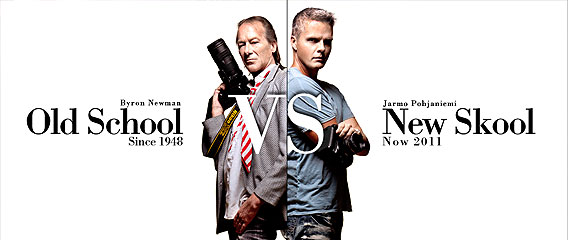
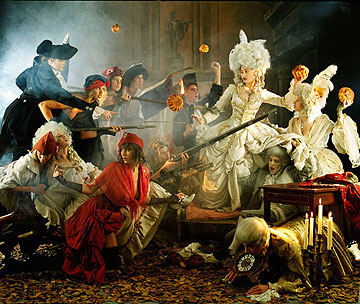
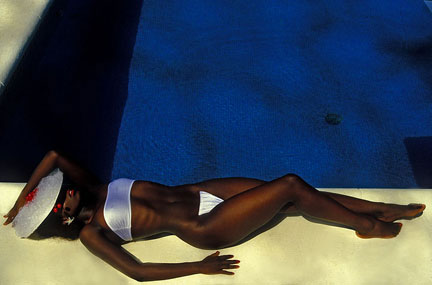














I was on a set one time. The video crew was busy doing their thing. I was setting my strobes. I hadn’t worked with this crew before. The gaffer and a few lighting grips were nearby watching me set up my gear. The gaffer suddenly.said, “Dude! Old school lighting, huh?” I turned to him, smiled, and said, “Thank you.”
It’s a privilege to understand Old School and use it in today’s photo market.
JP